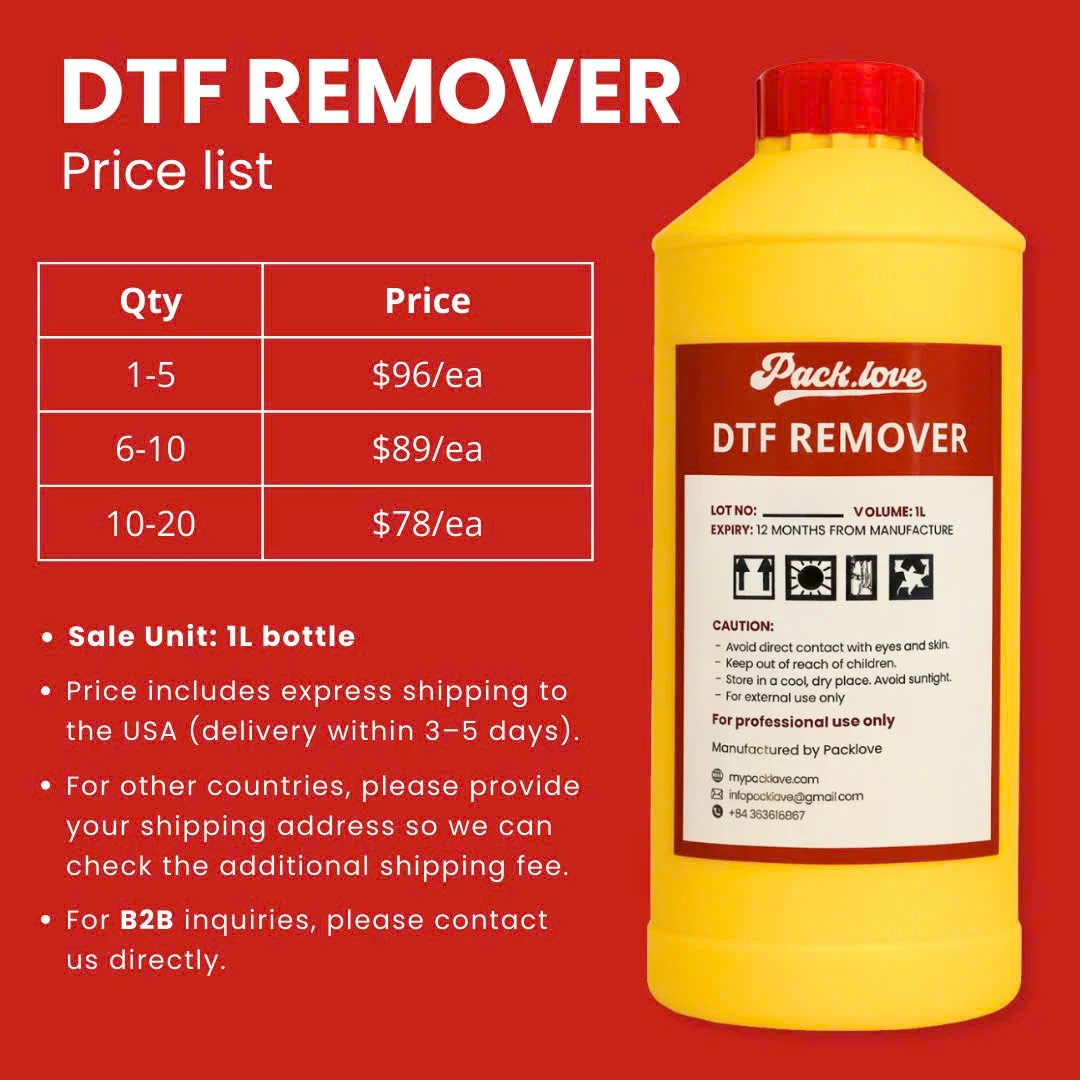What Is A Tuck: Definition, Types And Uses In Sewing And Fashion
This article will explain ‘tucks’ in simple terms. Tucks are a common technique in sewing and fashion, used to add lovely details or shape to fabric items. A tuck is a fold in fabric that is stitched down to keep it in place. This creates a small, neat ridge or line on the fabric. It’s a simple way to change how fabric looks and fits.
Tucks are versatile, serving two primary functions. They can add decorative details and texture, like making a shirt look fancy. They can also help shape clothes for a better fit, such as making a dress fit nicely at the waist.
1. Diving Deeper: Understanding Tucks
What exactly is a tuck? Let’s break it down:
1. It’s a Fold: A tuck begins with a precise fold in the fabric. The width of this fold can be very small, like for tiny Pin Tucks (very narrow, decorative tucks), or wider. This fold width changes how the finished tuck looks.
2. It’s Stitched: Sewing the fold to keep it in place.
After you fold the fabric, you sew it. This sewing line runs along the fold, holding it down permanently. This stitching creates the tuck. You can sew tucks by hand or with a sewing machine. Tucks are usually narrower and stitched along most or all of their length.
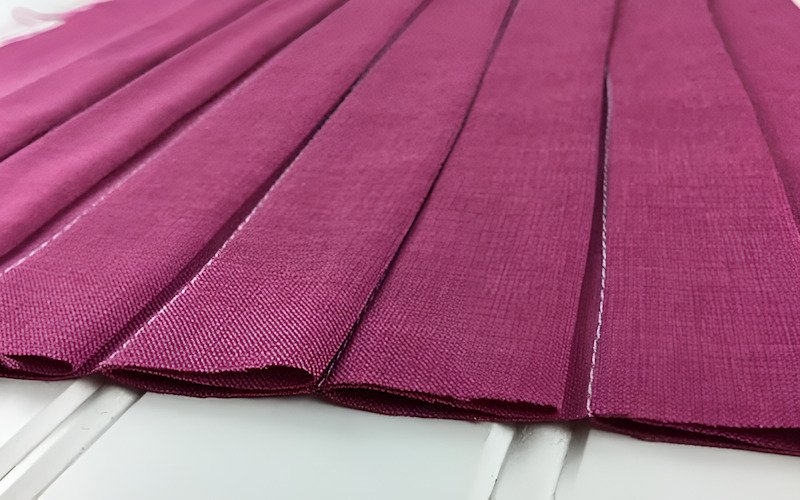
3. How Tucks are Different from Pleats and Darts (A simple comparison)
Tucks, pleats, and darts all involve folding and sewing fabric, but they are different.
Tucks vs. Pleats:
Both are fabric folds. Tucks are usually narrower and stitched along most or all of their length. They are often used for detail, texture, or controlled shaping. Think of tucks as small, neat stitched lines. Pleats are usually wider folds.
They are often stitched only at one end (like at the waistband of a skirt). Pleats add fullness or allow for movement. Think of pleats like bigger waves in fabric, such as on a kilt.
Tucks vs. Darts:
Darts are also stitched folds, but they are triangle-shaped (V-shaped) or tapered. Darts are specifically used to make flat fabric fit curved parts of the body, like the bust or waist. They remove extra fabric to create shape. Tucks are usually made of parallel folds.
Unlike darts, which remove fabric in a V-shape, tucks typically run parallel and modify the fabric’s texture or fit without significant removal. A dart helps a shirt fit around your chest. Tucks are more like straight lines for decoration or gentle shaping.
Here’s a quick comparison:
- Tuck: Usually narrow, stitched along its length. Used for detail, texture, or gentle shaping.
- Pleat: Often wider, stitched just at one end (e.g., at a waistband). Used to add fullness or allow movement.
- Dart: A V-shaped fold stitched to a point. Used to shape fabric to fit body curves by removing excess.

2. Why Do We Use Tucks? The Main Reasons
2.1 To Add Shape: Making clothes fit better or look a certain way.
Tucks can gently pull in fabric to shape clothing. For example, tucks at the waist of a dress or along the back of a shirt can make it less boxy. They give a more tailored look without the strong shaping of darts. Tucks can also create specific looks, like making the top part of a dress (the bodice) fit closely before the skirt becomes fuller.
Tucks can make a loose dress fit a bit closer at the waist, so it looks neater. For instance, we at Packlove have observed many small brands effectively using subtle tucks to give their simple garment designs a more flattering and professional fit.
2.2 For Decoration: Making fabric look pretty with texture.
Tucks are great for decoration. Rows of tucks, especially thin Pin Tucks or evenly Spaced Tucks (parallel tucks with a measured space between each one), create interesting patterns and texture on the fabric. They can add a touch of elegance, a traditional feel, or a handmade look.
Lots of tiny tucks close together can make a plain shirt front look very special and detailed. Decorative tucks are a favorite for children’s wear and delicate blouses; they add so much charm.

2.3 To Control Fullness: Making fabric wider or narrower in certain spots.
Tucks can control how much fabric there is in one area. For example, tucks at a yoke (a shaped piece of fabric at the shoulders or waist from which the rest of the garment hangs) can control how fabric falls over the shoulders.
Tucks at a waistband can manage the fullness of a skirt. They offer a more structured way to control fullness than simple gathers. If you have a lot of fabric for a skirt, tucks at the top can make it fit the waistband nicely, and then the skirt can still be wide at the bottom.
3. Types of Tucks: Exploring Different Styles
3.1 Pin Tucks: Tiny and Delicate Folds
1. Description:
Pin Tucks are very narrow, carefully stitched folds. They are typically only 1-2 millimeters wide, about as thin as a pin! They are stitched very close to the folded edge. Pin tucks are often sewn in rows next to each other, sometimes close together or with small spaces between them. They look very delicate and neat. As the name suggests, they can be as narrow as a straight pin – that’s often how tiny they are!
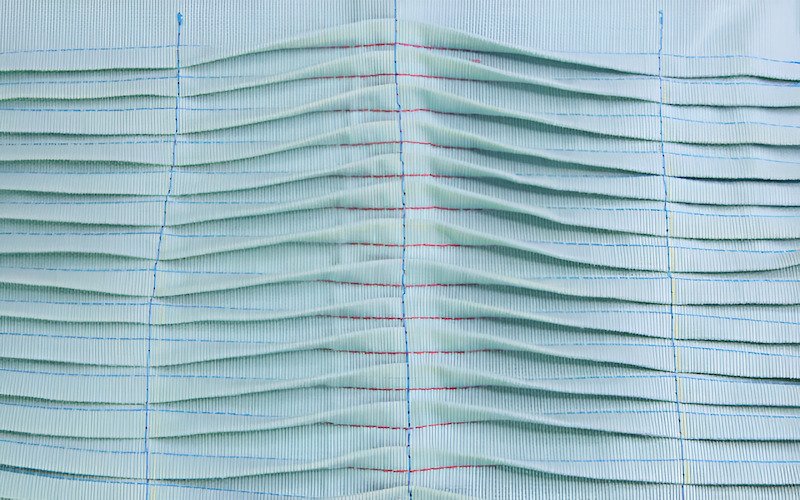
2. Common Uses:
- On the front (bodices) or shoulder parts (yokes) of blouses and shirts, especially for traditional or formal styles.
- For baby clothes and children’s clothing, like smocks or special occasion dresses.
- In heirloom sewing (sewing special items meant to be passed down through generations) projects.
- On lingerie and fine nightwear.
- On cuffs and collars for a delicate detail.
- Often used on lightweight fabrics like cotton lawn, voile, silk, or linen.
3.2 Spaced Tucks: Neat Rows with Gaps
1. Description:
Spaced Tucks are parallel tucks. They can be pin tucks or a little wider. They are sewn with a deliberate, measured, and even space between each tuck. This space is part of the design. The width of the tucks and the space between them can change the look.
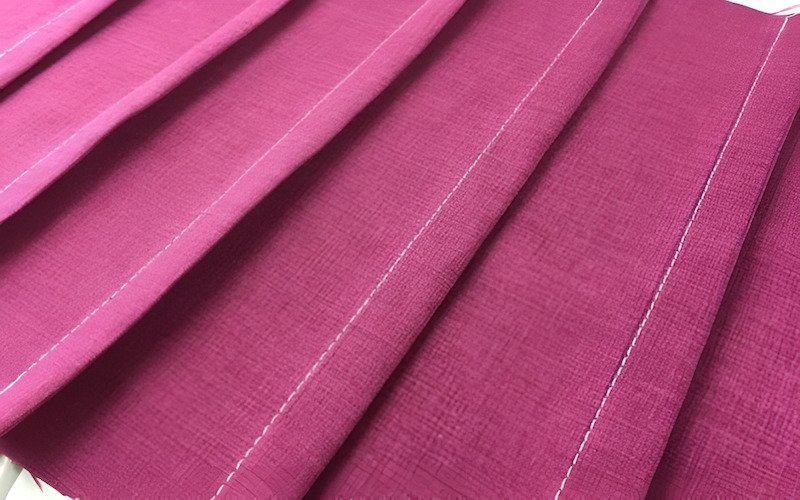
2. Common Uses:
- As decorative panels on the front of shirts or the bodice of dresses.
- On yokes of shirts and dresses.
- On skirts, to add detail or control gradual fullness.
- Sometimes on cuffs or sleeves.
3.3 Blind Tucks: Folds that Touch or Overlap
1. Description:
Blind Tucks are parallel tucks sewn so that the folded edge of one tuck meets or slightly overlaps the stitching line of the tuck next to it. This creates a continuous, textured surface where the stitching lines between the tucks are hidden. That’s why they are called “blind.” They can look like ribs or cords depending on the fabric and how wide the tucks are.
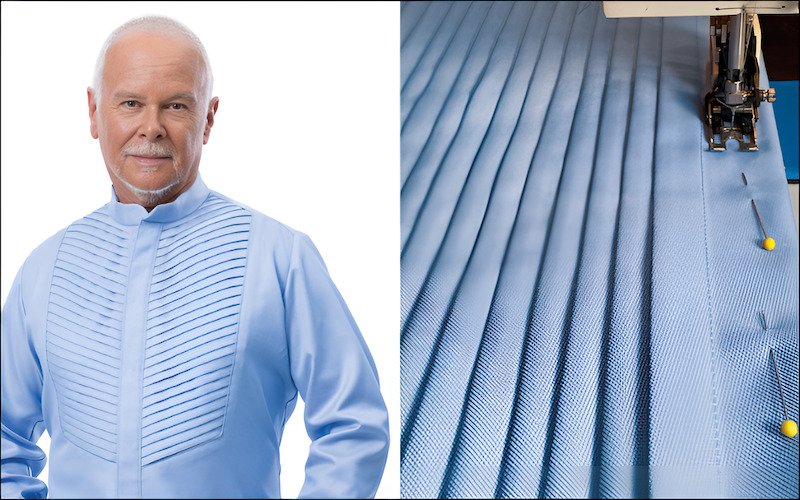
2. Common Uses:
- To create solid textured areas on yokes, cuffs, or bodices.
- To add decorative bands or panels.
- To make fabric edges or sections stronger or give them more body.
- Sometimes used on hems.
3.4 Released Tucks: Stitched Then Freed
1. Description:
Released Tucks are tucks that are stitched down for only part of their length. The stitching starts at one edge (like a waistline, shoulder, or yoke seam) and goes for a certain distance. After that, the fold is left unstitched and “released.”

2. Effect:
Released tucks provide shaping or control where they are stitched. They add fullness, softness, or flare where they are released. They are often used to fit a garment at the waist or shoulders while allowing more fabric volume below. For example, skirts can be fitted at the waist with released tucks, making the hem flare out. Blouses might have released tucks from the shoulder or yoke for a softer drape.
3.5 Wider Tucks (or Broad Tucks): Making a Bigger Statement
1. Description:
Wider Tucks, also called Broad Tucks, are made with a larger fold of fabric. They might be 1/2 inch, 1 inch, or even wider. They create a more noticeable, bolder texture or design feature compared to pin tucks. They are stitched the same way as other tucks, just with a wider fold.

2. Common Uses:
- On heavier fabrics like wool, denim, or corduroy, where pin tucks might not show up well.
- As clear design features on coats, jackets, and skirts.
- In home decor items like cushions or bed linens for a bolder texture.
3.6 A Quick Look at Other Tuck Types
Here are a few more types of tucks you might see:
1. Shell Tucks / Scalloped Edge Tucks: These create a decorative, wavy or shell-like edge on fabric, often sewn on lightweight materials.

2. Cross Tucks: Cross tucks are made by sewing one set of parallel tucks, then another set going across them (perpendicular). This forms a grid pattern.
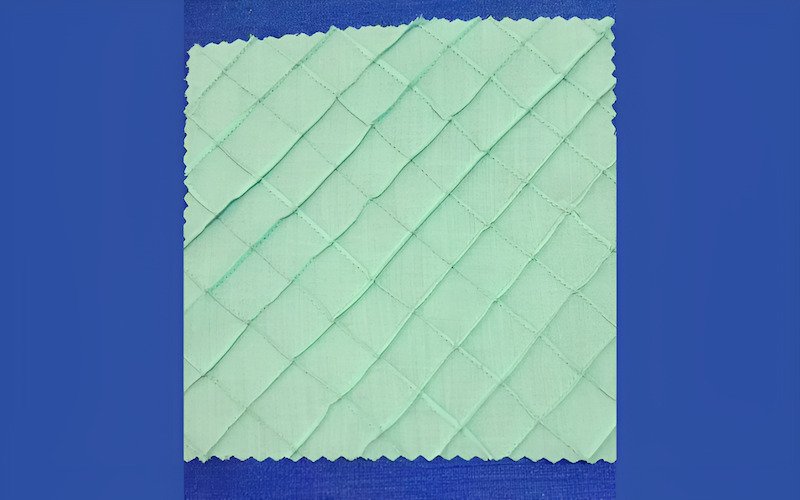
3. Corded Tucks: In corded tucks, a fine cord or yarn is placed inside the fold before stitching. This makes the tuck raised and rounded.
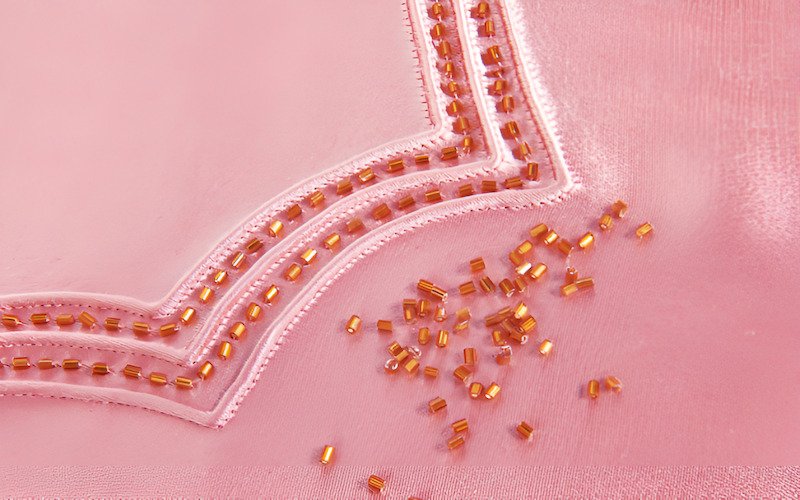
4. Where Do You See Tucks? Examples in Everyday Items
4.1. Tucks in Clothing We Wear
1. Shirts and Blouses:
You often see vertical pin tucks or spaced tucks on the front panels (the bib area) of shirts and blouses. Sometimes they are on cuffs or along the button plackets (the strip of fabric where buttons and buttonholes are). These tucks are often decorative, adding elegance or a classic touch.
They can also provide subtle shaping around the bust or back. Many formal shirts or pretty blouses have rows of tiny pin tucks down the front for a fancy look.
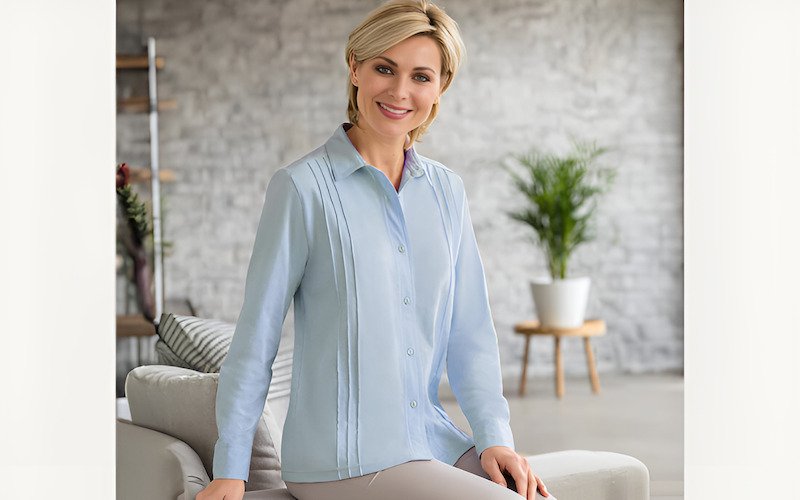
2. Dresses and Skirts:
In dresses and skirts, you might find released tucks at the waistline. These help the dress fit at the waist and add fullness to the skirt. Spaced or blind tucks can be used on bodices for decorative texture or shaping. Sometimes, horizontal tucks are seen near skirt hems for detail or, in older styles, as growth tucks. A summer dress might have tucks sewn at the waist that open up to make the skirt flowy.
3. Children’s Clothing:
Tucks are popular in children’s clothing because they add charm and a traditional look. They can also be functional. Common types are pin tucks and spaced tucks on the bodices of dresses, smocks, and rompers. You might also hear about “growth tucks.”
These are wider tucks, often horizontal, at the hems of skirts or trousers, or on sleeves. They are designed to be let out as the child grows, making the garment last longer. Baby clothes often have sweet little tucks. Some kids’ pants or dresses have bigger tucks at the bottom that parents can undo so the clothes last longer.

4.2 Tucks in Other Fabric Projects:
1. Home Decor:
Tucks are not just for clothes! They are also used in home items. For example, you might see decorative tucks on throw pillows or cushions for texture. Pin tucks can make duvet covers or pillow shams look elegant. Sometimes, tucks are used on curtain valances or tie-backs.

2. Accessories:
You can find tucks on smaller fabric items too. Fabric bags or pouches might have decorative tucks. Details on fabric hats or headbands can also be made with tucks.
5. A Few Simple Tips for Working with Tucks
5.1 Choosing Your Fabric:
1. What works well:
Light to medium-weight woven fabrics are good choices. These fabrics press well and are not too slippery. Examples include:
- Cotton (like lawn, poplin, or quilting cotton)
- Linen
- Chambray
These fabrics are easier to fold accurately, hold a crease, and stitch neatly, especially for beginners.
2. What can be tricky:
Some fabrics can be challenging for tucks, especially if you are new to sewing.
- Very thick or bulky fabrics are hard to fold neatly.
- Very sheer or delicate fabrics can pucker or be damaged.
- Slippery fabrics are difficult to control.
- Very stretchy knit fabrics can stretch out of shape.
5.2 Fabric Amount: Remember, tucks use extra fabric! Plan for this.
This is important: making tucks uses up fabric width (or length, if your tucks run that way). For each tuck, you lose twice its finished width from your flat fabric piece. For example, a 1/4 inch finished tuck uses 1/2 inch of fabric. Always add extra fabric when cutting your pieces if you plan to add tucks. Similar to how a hem consumes fabric, tucks also require extra material.
5.3 Helpful Tools:
These basic tools can help you sew tucks accurately:
1. Sewing Machine: A sewing machine helps make straight, even stitches. Some machines have a special ‘pintuck foot’ (a special sewing machine foot designed to help create very narrow, parallel tucks).
2. Iron: Very important! Press your folds before sewing. Press the finished tucks after sewing. This gives a crisp, professional look.

3. Marking Tools: A fabric pencil, chalk, or a disappearing ink pen helps you draw guidelines for folding and stitching straight tucks.
6. Packlove’s Quick Pointers for Success with Tucks
6.1 Start Simple
If you are a beginner, start with basic tuck types. Try spaced tucks or simple pin tucks on a straight piece of scrap fabric. Get good at sewing straight lines before you try tucks on curves or more complex projects.
6.2 Press, Press, Press
We can’t say this enough: ironing is key! Press, Press, Press! Press the initial fold line carefully before you stitch. After stitching, press the finished tucks. Usually, you press them to one side, but sometimes they are pressed open, depending on the type of tuck. This makes them look neat.
6.3 Practice Makes Perfect
Practice on scrap fabric before you work on your actual garment or project. This helps you get a feel for the fabric and your machine settings. It also helps you learn to make even tucks.
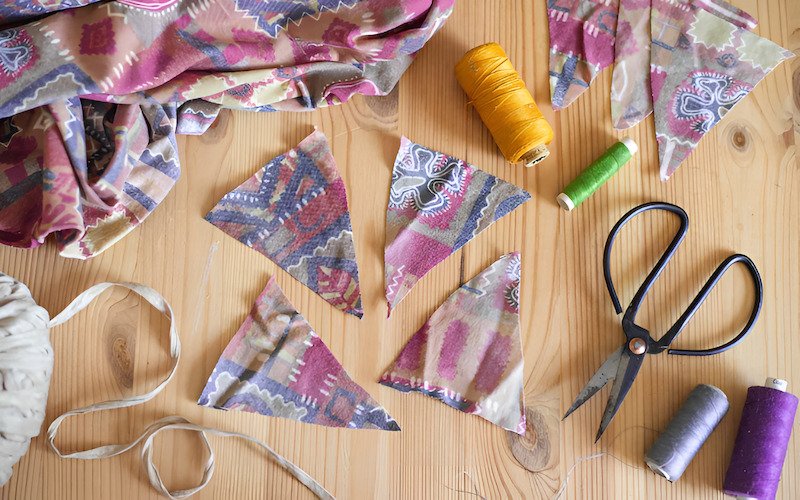
6.4 Labelling Your Tucked Creations
If you make beautiful clothes or items with these tuck details, especially for sale or as gifts, a lovely custom label can add a really professional finish. Consider adding a professional finish with custom labels. Options range from woven labels to printed tags, and don’t forget a care label to help maintain those tucks. Don’t forget a care label to help keep those tucks looking great!
7. Your Questions Answered: Tuck FAQs
7.1 What’s the main difference between a tuck and a pleat?
Tucks are usually narrower and stitched down most or all of their length. They are often for detail or gentle shaping. Pleats are typically wider, often stitched only at one end (like a waistband), and are mainly for adding fullness or allowing movement.
7.2 Are tucks difficult for sewing beginners?
Basic tucks, like straight pin tucks or spaced tucks on suitable fabric, are generally manageable for beginners. You need careful marking and pressing. More complex tucks or working with difficult fabrics can be harder.
7.3 Can I add tucks to clothes I already own?
Yes, it’s possible, especially for decoration if there’s enough loose fabric. Adding tucks to significantly reshape an existing garment is more complex and might need good alteration skills.
7.4 How do I care for clothes with tucks?
Generally, follow the garment’s fabric care instructions on its label. Ironing after washing helps keep tucks crisp. For delicate fabrics or very detailed tucks, gentle washing is best. You might want to press them from the wrong side of the fabric or use a press cloth. Always check the care label first!
Explore more:
Tucks are stitched folds in fabric. They are used to add style, shape, and texture to clothes and other fabric items. They are a versatile and valuable technique in sewing and fashion. Hopefully, this article has helped you understand what tucks are. We encourage you to look for tucks in clothes you see and to try using them in your own sewing projects. They can add a really special touch!
Want more sewing and design inspiration? Visit the Packlove Blog! And if you’re incorporating these beautiful details into your creations, the right label can perfectly showcase your brand!






